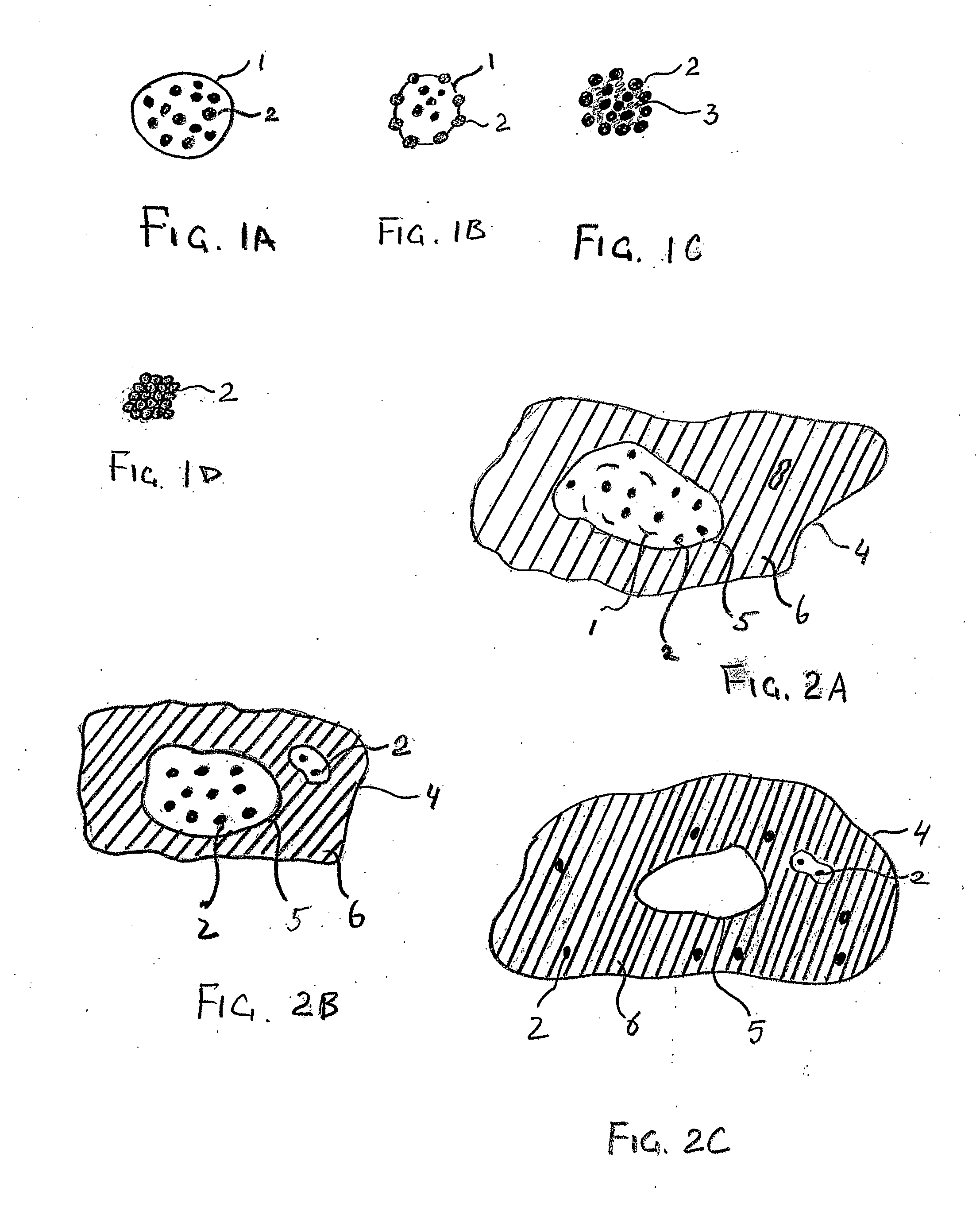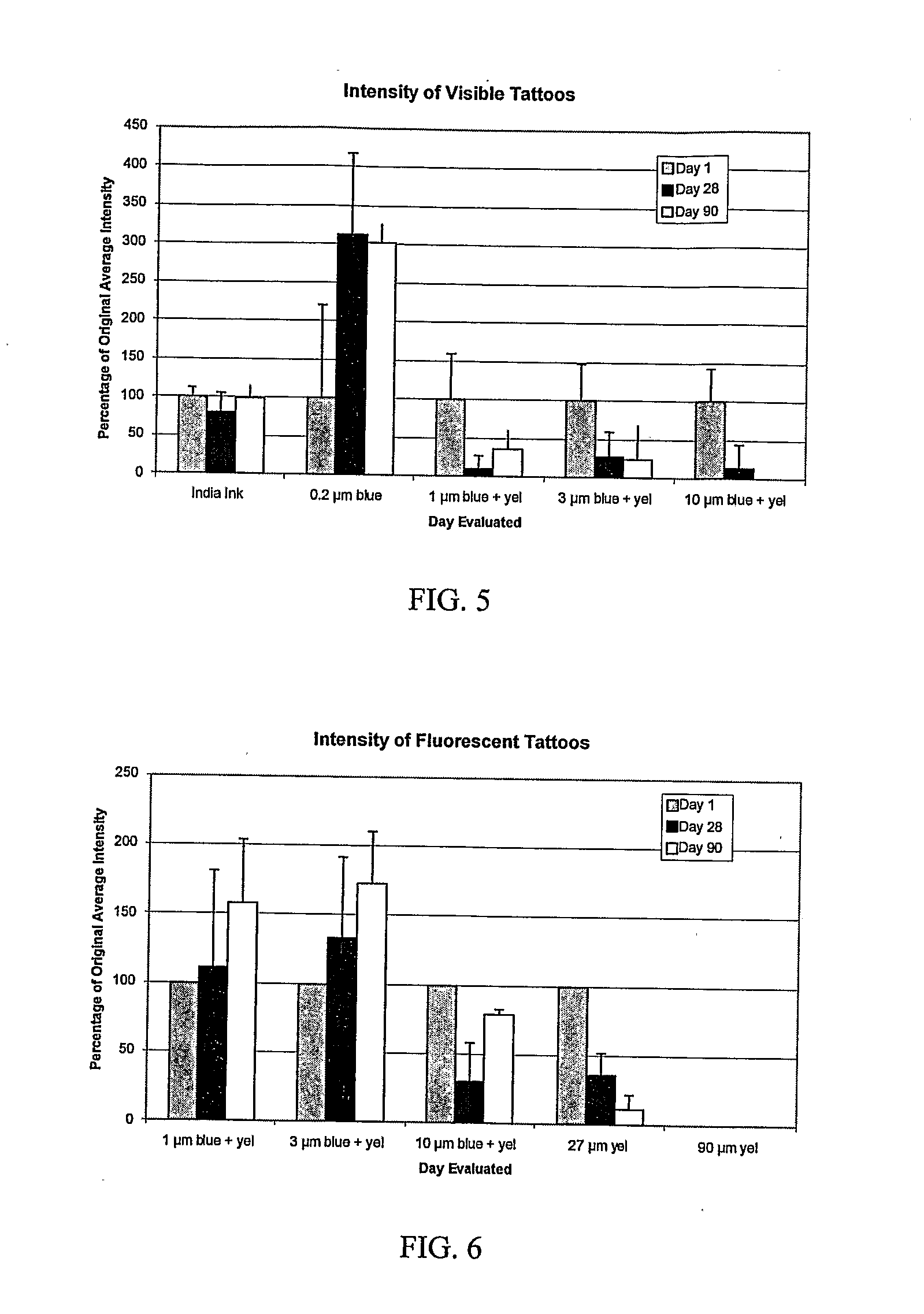Cellular or organelle-entrapped nanoparticles
a nanoparticle, cell or organelle technology, applied in the field of cellular or organelle-entrapped nanoparticles, can solve the problems of tissue marking blur, pigment particles can be affected in a variety of ways, detrimental to the appearance of tissue marking,
- Summary
- Abstract
- Description
- Claims
- Application Information
AI Technical Summary
Benefits of technology
Problems solved by technology
Method used
Image
Examples
experimental example
[0080]A study was conducted to determine the effects of microparticle size on tattoo appearance, distribution and skin responses to tattoos made with colored and fluorescent polystyrene microparticles ranging from 0.2 to 90 μm in diameter. Gross and microscopic observations of the particles' distribution, tattoo appearance and skin responses were performed and compared to conventional tattoo ink (India Ink, particle size <1 μm).
[0081]Experimental Design:
[0082]Sixteen male hairless rats, 6-8 weeks of age were used to test the biodistribution of biomaterials applied cutaneously as tattoos. Seven markings, each 1-2 cm in length and 3-5 mm in width were created on each rat using a standard tattooing device, as summarized in Table 1. For tattoo application, equal volumetric fractions of blue colored and fluorescent polystyrene microspheres (Polysciences, Warrington, Pa.) were mixed. Concentration of microspheres in the water dispersion was 2.5% (v / v). The rats were allowed to recover and...
PUM
| Property | Measurement | Unit |
|---|---|---|
| Fraction | aaaaa | aaaaa |
| Diameter | aaaaa | aaaaa |
| Diameter | aaaaa | aaaaa |
Abstract
Description
Claims
Application Information
 Login to View More
Login to View More - R&D
- Intellectual Property
- Life Sciences
- Materials
- Tech Scout
- Unparalleled Data Quality
- Higher Quality Content
- 60% Fewer Hallucinations
Browse by: Latest US Patents, China's latest patents, Technical Efficacy Thesaurus, Application Domain, Technology Topic, Popular Technical Reports.
© 2025 PatSnap. All rights reserved.Legal|Privacy policy|Modern Slavery Act Transparency Statement|Sitemap|About US| Contact US: help@patsnap.com



